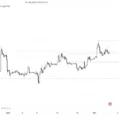Before you dive into the article, pay attention to the fact thatthe fact that none of theis financial advice, please do your own research to make a more informed decision.
How do TradFi loans work?
Banks issue loans if they are not repaidthey foreclose on the collateral (they take away or sell the collateral/demand money from the guarantor) or go to court, after the trial, by force of the state (bailiffs, seizure of property, bankruptcy), the decision is executed. In case of default, the debtor's credit rating also suffers.

What is better - security or a court decision?Obviously, security. It is much better to be able to seize an apartment/business from the debtor and quickly sell it than to go to court (courts are huge expenses, the outcome of the case is not obvious and the risk of non-enforcement of the decision).
Why do banks issue unsecured loans at all?loans? You can ask for a higher rate (higher risk - higher reward), which is also convenient for consumer loans. Plus, some borrowers cannot provide collateral (for example, project companies such as SPV).
How do banks decide whether they need collateral?debtor? They look at the Basel III requirements (or the requirements of the Central Bank of the Russian Federation) for risk scoring, minimum collateral, minimum reserves for possible loan losses. To simplify, for each borrower the bank evaluates his solvency (accounting documents, presence of real activity and capital, etc.), field of activity, credit rating and a dozen other things, after which he decides on the minimum level of collateral: in most cases, the lack of sufficient provision is bad.
What to do if an unsecured loan is notcoming back? First go to court, but this does not always help. Banks also have reserves for loan losses, plus they may have insurance against the risks of loan default. Maybe there are some other tools, but one way or another, these tools do not always help - sometimes the bank itself ends up being the debtor.
Result:For unsecured loans to work, you need (1) high-quality risk scoring, (2) the coercive power of the state and (3) additional protection mechanisms (for a specific bank/its capital and the financial system as a whole). Otherwise the system may break down.
Does this have anything to do with crypto?

In the most direct way.The banking system is so complex not because people are prone to bureaucracy, but because they learn from their own experience - when every new vulnerability is discovered (bank failures, financial crises, etc.) they try to close it with a regulatory update. Often not prompt enough, not always successful and almost always overly bureaucratic. But the fact is that banking regulation has a sound rationale. And then Goldinch appears in crypto and seems to say “down with the financial system, down with regulation, we will teach our users to issue loans to Africa!”
Goldfinch Finance. Essence, mechanics of work

Credit lines to companies from the real world without collateral, guarantees or employment certificates:
⁃ auditors randomly selected by the protocol,audit and approve borrowers, must stake their GFI: interestingly, their GFI will be written off not if the borrower defaults, but if the auditor voted differently from most other auditors;
⁃ borrowers themselves create pools and determine the terms of the loan themselves, after which they offer them to bakers, and are also required to stake GFI in the amount of double the cost of auditor services;
⁃ pools consist of two tranches - junior (frombakers, in case of default, the first to bear losses) and senior (from other lenders, more protected), borrowers first of all need to be convinced to provide a loan to bakers (since the final size of the loan depends on the amount deposited by bakers);
⁃ bakers provide the junior tranche, for which they claim 70% of the income from the pool;
⁃ lenders (liquidity providers) deposit their funds into the protocol (provide a loan as a senior tranche), and the protocol itself distributes their funds among the pools;
⁃ default risks: assumed first by the junior tranche (bakers), then by the senior tranche.
How does this work in practice?
⁃ total loans issued for more than $100 million;
⁃ borrowers include investment funds and startups from third world countries;
⁃ APY in pools from 12% to 19%.
What's wrong with Goldfinch?
⁃ so, we issue loans to Africanto no-name companies: what should motivate them to return the money (as we remember, the courts will not help us)? According to Goldfinch, these are: (1) the desire to continue to borrow from Goldfinch, (2) the reluctance to have an on-chain record of default, (3) possible (but optional) off-chain agreements between bakers and borrowers;
⁃ instead of banking regulation andAs risk managers, we are asked to trust anonymous bakers. Apparently, the idea is that over the decades our financial system has not been able to properly set up risk scoring and frameworks for working with loans;
⁃ redistribution of default risks is near-zero (Goldfinch suggests going to court in case of default) - that is, in the event of default, no one except the lenders will suffer financially;
⁃ Goldfinch is trying (through influencers) to conveythe idea that they have high profitability, stable cash flow, etc. — what do these numbers mean if the protocol architecture does not protect users from default?
Maple Finance. The essence, the mechanics of work.
Infrastructure for raising capital by institutional investors:
⁃ pool managers (pool delegate) essentiallyact as underwriters: establish the “rules of the game” for pools (including determining the terms of the loan), approve borrowers for them (including carrying out due diligence, determining individual conditions), risk their capital (in the form of LP MPL:USDC). For this, everyone receives a portion of the commissions. Managers can only be persons approved by the Maple team;
⁃ borrowers (primarily institutionalinvestors) can participate as borrowers in the pool through the pool manager, are required to make a deposit agreed with the manager. Borrowers can only be persons approved by the Maple team;
⁃ lenders contribute their funds to pools (provide loans);
⁃ for each pool there is an insurance fund: policyholders can stake LP MPL:USDC as insurance in exchange for part of the commissions;
⁃ risks of default:some borrowers are required to post collateral (at the discretion of the manager), which is sold in case of default; also for each pool (1) the manager allocates a certain number of his MPL:USDC LPs, (2) everyone can stake their MPL:USDC LPs into the insurance pool. If there is insufficient collateral, manager funds, and insurance pool funds, the risk of default is borne by lenders.
How it works in practice
⁃ total loans issued for more than $1 billion;
⁃ managers include top funds like Maven11, as well as Celcius (landing platform - only their personal funds are in their pool) and Orthogonal Trading (trading company);
⁃ among borrowers - market makers (Amber, Wintermute);
⁃ APY in pools from 3% to 12%;
⁃ insurance pools are near zero and do not cover even 10% of the loan amount.
What's wrong with Maple
⁃ decentralization in the protocol tends to zero:borrowers and managers are approved by the Maple team (apparently, the protocol plans to decentralize over time, but there is nothing like decentralization yet);
⁃ motivation for repaying the loan: possible loss of collateral (which most borrowers have not paid so far) and reputational damage - like Goldfinch, does not look motivating enough;
⁃ instead of banking regulation and risk managers, we are offered to trust pool managers - and again, as in Goldfinch, the decision looks dubious;
⁃ so far the risks have not been redistributed in any way(>90% of the risks are essentially on the users-lenders, since most borrowers do not provide any collateral, the collateral from pool managers is minimal, all collateral together with insurance from users will not be enough even in the event of non-repayment of 10% of the loan amount), also there is a suspicion that in relation to some of the loans, the same people transfer funds between their own pockets;
⁃ what prevents the pool manager and borrowers from colluding - losing their collateral and leaving with the lenders’ money is unclear.
How bad is it?
1.Conceptually, the protocols seem to pursue good goals. They are trying to merge the real world with DeFi. Moreover, they are trying to transfer risk management into the hands of the community (the ultimate option for implementing the concept of the “invisible hand of the market”). But personally, I have very serious doubts about the community’s ability to sensibly assess the risks of providing loans to African startups. In addition, the redistribution of risks for Goldfinch and Maple is approximately zero - if the former do not focus on this point at all, the latter seem to have come up with a working scheme, but the market is not yet ready to risk its assets by insuring unsecured loans (as indicated by empty insurance pools).
2.The Goldfinch and Maple mechanics are a poorly put together mini-version of banking regulation, not sustainable in the long term and not scalable to the levels required by the market. Plus, we must not forget that banking regulation in its current form is a logical result of centuries of economic development, and Goldfinch and Maple are an attempt to extend certain elements of such regulation to DeFi.
3.Perhaps “we’re still early”, and we just need to wait for the advent of streaming payments, decentralized social networks with a social reputation system, connecting real individuals with their wallets, and then Goldfinch and Maple will combine all these things with their battle-tested infrastructure
4. Ultimately, loans from Goldfinch and Maple are not at all risk-free.





